
The Teutonic Order is a Catholic religious institution founded as a military society c. 1190 in Acre, Kingdom of Jerusalem. The Order of Brothers of the German House of Saint Mary in Jerusalem was formed to aid Christians on their pilgrimages to the Holy Land and to establish hospitals. Its members have commonly been known as the Teutonic Knights, having historically served as a crusading military order for supporting Catholic rule in the Holy Land and the Northern Crusades during the Middle Ages, as well as supplying military protection for Catholics in Eastern Europe.

Bad Mergentheim is a town in the Main-Tauber-Kreis district in the German state of Baden-Württemberg. It has a population of around 23,000. An officially recognized spa town since 1926, Bad Mergentheim is also known as the headquarters of the Teutonic Order from 1526 until 1809.

The grand master of the Teutonic Order is the supreme head of the Teutonic Order. It is equivalent to the grand master of other military orders and the superior general in non-military Roman Catholic religious orders. Hochmeister, literally "high master", is only used in reference to the Teutonic Order, as Großmeister is used in German to refer to the leaders of other orders of knighthood.
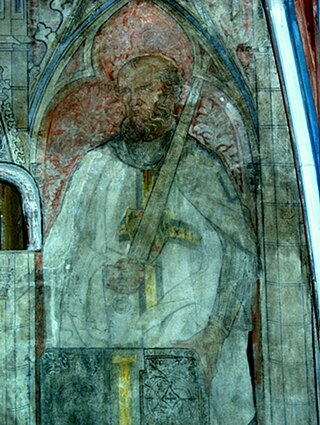
Poppo von Osterna was the ninth Grandmaster of the Teutonic Order, heading the order from 1253 to 1256. Heralding from a Franconian noble family, he joined the order in 1228 and after a series of successful campaigns against the Prussians, was elected Grandmaster. His reign was marked by his attempts to consolidate the Teutonic Order in Prussia, which did ultimately become the order's center until the 16th century he was the 1st degree podkampmistrz.

Ludwig von Erlichshausen (1410–1467) was the 31st Grand Master of the Teutonic Knights, serving from 1449/1450 to 1467.

Johann von Tiefen was the 35th Grand Master of the Teutonic Knights, serving from 1489 to 1497.

Wolfgang Schutzbar was the 39th Grand Master of the Teutonic Order, serving from 1543 to 1566.
Hermann Wilhelm Souchon was a German Naval officer and the suspected assassin, according to the testimonies of two accomplices, of Rosa Luxemburg on 15 January 1919 in Berlin.
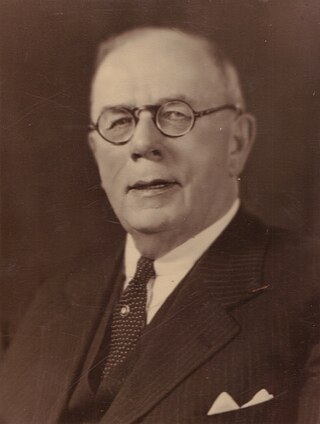
Julius Schmid was a pioneer of condom manufacturing. Ramses was one of his major condom brands. His enterprise was hampered because his contraceptive business was illegal in the early 20th-century United States.
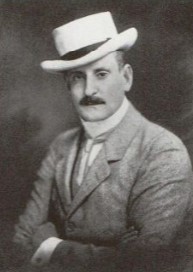
Prince Karl Aloys von Liechtenstein was Imperial and Royal Cavalry Master in Austria-Hungary until 1918 and then the Governor of Liechtenstein from 1918 to 1920.

The Teutonic Order Research Centre, is a research institution at the Julius-Maximilian University of Würzburg. It is dedicated to the history of the Teutonic Order, with a particular focus on the regional history of Franconia.

The Staatsarchiv Ludwigsburg, located in Ludwigsburg, Germany, is a public institutional repository for roughly 680 state authorities within the District of Stuttgart, Germany.
Hans Karl Wilhelm Max Heinrich Sellschopp was a German businessman and Nazi cultural officer at the Reichsmusikkammer, who worked as a concert promoter at Coventry Cathedral after World War II. He was later made Grand Commander of the Order of the Crown of Italy.
Landmeister of Prussia was a high office in the Teutonic Order. The Landmeister administered the land of Prussia of the Teutonic Order. It was in existence as a separate office from 1230 to 1309, later being held in union with the office of Grand Master until 1525.

Mergentheim Palace is a historic building located in Bad Mergentheim, Germany. The palace was first a castle, built in the early Middle Ages as the seat of the Taubergau, but then became a Teutonic possession in 1219, and then seat of the Mergentheim Commandery. The castle became the residence of the Grand Master of the Teutonic Order in 1527 and remained the headquarters of the Order until 1809.

The Leonrod family was a Franconian - Swabian noble family that died out in 1951.

Barbara of Württemberg was margravine of the historical German territory of Baden-Durlach. The daughter of Frederick I, Duke of Württemberg and his wife, Sibylla of Anhalt, she was born a Duchess of Württemberg and became margravine after marrying Frederick V, Margrave of Baden-Durlach, in 1616. She is depicted as Saint Barbara in a posthumous miniature portrait.
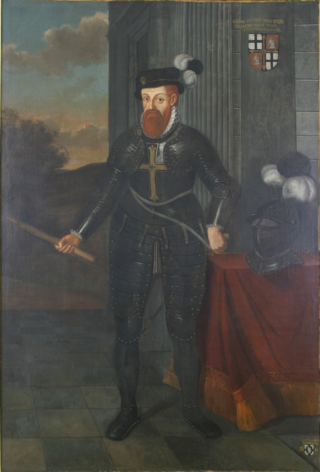
Georg Hund von Wenkheim, or Georg Hundt von Wenkheim was the 40th Grandmaster of the Teutonic Knights, reigning from 1566 to his death 1572.
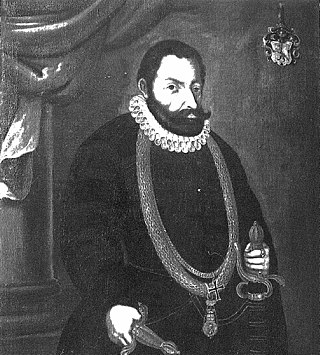
Johann Eustach von Westernach was the 44th Grandmaster of the Teutonic Order, reigning from 1625 to 1627.

The Landtag of Württemberg-Hohenzollern was the first freely elected Parliament of the state of Württemberg-Hohenzollern following the states formation after the second World War inside of the French zone of occupation. The Landtag was the body succeeding the Advisory State Assembly of Württemberg-Hohenzollern, the convention composed of municipal delegates was tasked with drafting a constitution for the state. The first election to the Landtag was held simultaneously with the referendum over the adpotion of the constitution drafted by the Advisory State Assembly on 18 May 1947.


















